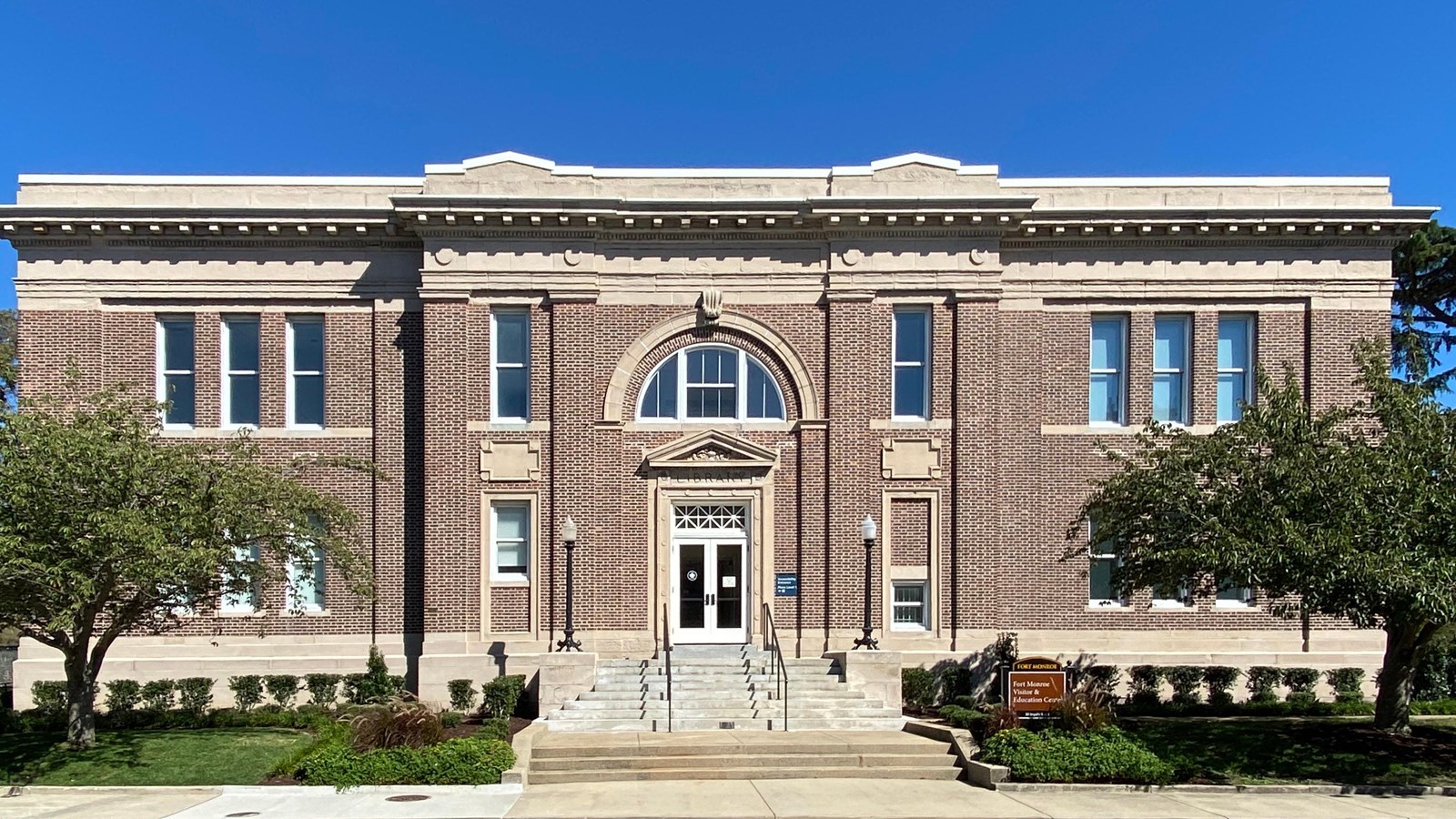Last updated: August 6, 2024
Place
Fort Monroe Visitor & Education Center

NPS Photo / Aaron Firth
Accessible Rooms, Accessible Sites, Automated Entrance, Automated External Defibrillator (AED), Benches/Seating, Captioned Media, Cellular Signal, Elevator, Fire Extinguisher, Gifts/Souvenirs/Books, Historical/Interpretive Information/Exhibits, Information, Information - Maps Available, Information - Ranger/Staff Member Present, Information Kiosk/Bulletin Board, Low-Vision Access, Parking - Auto, Parking - Bus/RV, Restroom, Restroom - Accessible, Restroom - Family, Scenic View/Photo Spot, Toilet - Flush, Trash/Litter Receptacles, Water - Bottle-Filling Station, Water - Drinking/Potable, Wheelchair Accessible
Start your visit and get oriented at Fort Monroe Visitor & Education Center. Exhibits and videos tell of people and events that shaped fort's historic landscape. The Visitor & Education Center is in the former Coast Artillery Library, built in 1909.
The Fort Monroe Visitor and Education Center opened to the public in 2020 after an extensive adaptive reuse project that installed orientation and interpretive exhibits and videos, restored historic features and provided full accessibility access to this structure. Amenities available include public restrooms, visitor information, tours, and programs, and park bookstore. Exhibits found within the galleries explore central themes important to the site such as Native American presence, European colonists arrival, first enslaved African landing in 1619, the "Contraband Decision" of 1861 beginning the end of slavery in the US, and the significance of the role of enslaved Africans, freedom seekers, and other significant figures from history on site such as Harriet Tubman. Visitors should enquire with staff to coordinate access to the Casemate Museum, when open, to explore more in-depth the over 400 years of history and culture on exhibit.
Designed by noted architect Francis B. Wheaton in the Beaux Arts architectural style, the visitor center (Building# 138), has a classical façade featuring Flemish bond brick walls on a limestone foundation. Construction was completed in 1909 and named Wisser Hall in honor of Brigadier General John P. Wisser an instructor at the Coast Artillery School at Fort Monroe. Following World War II, the visitor center was converted into office space for use by US Army commands headquartered at Fort Monroe. Visitors can see two plaques showing the high-water marks of two significant storm events on the front stairway, the higher being Hurricane Isabel in 2003 and the lower being Chesapeake-Potomac Hurricane in 1933. Inside you’ll find skilled craftsmanship in moldings and ironwork, terrazzo flooring, marble stairs, two-story skylight, and a colonnaded hall.
